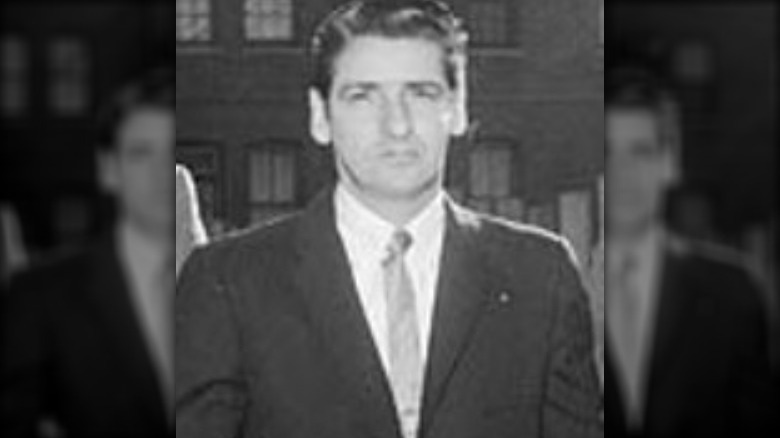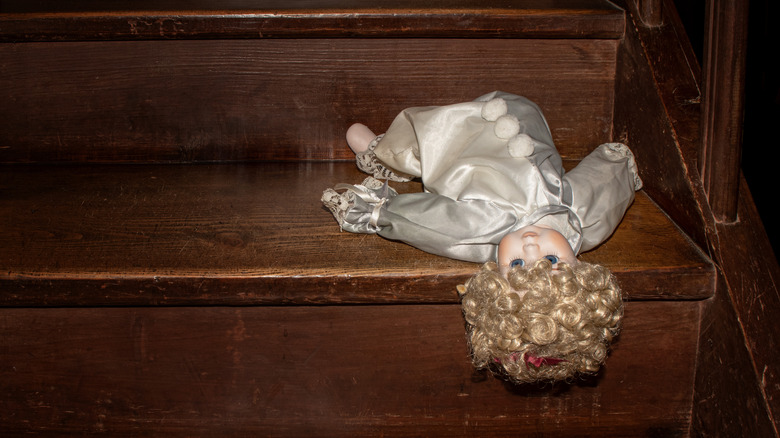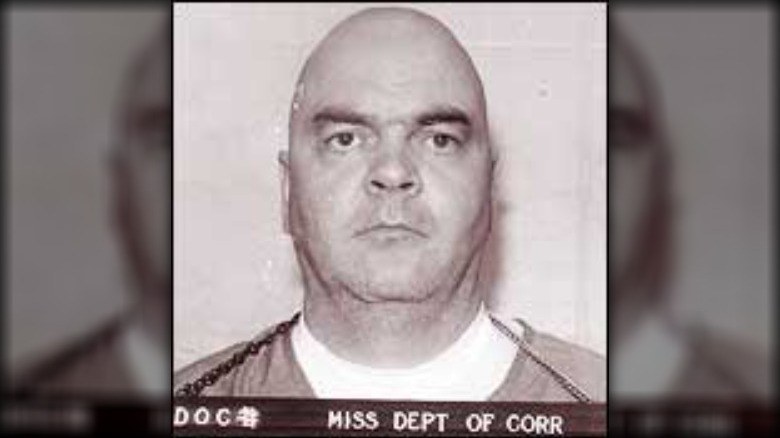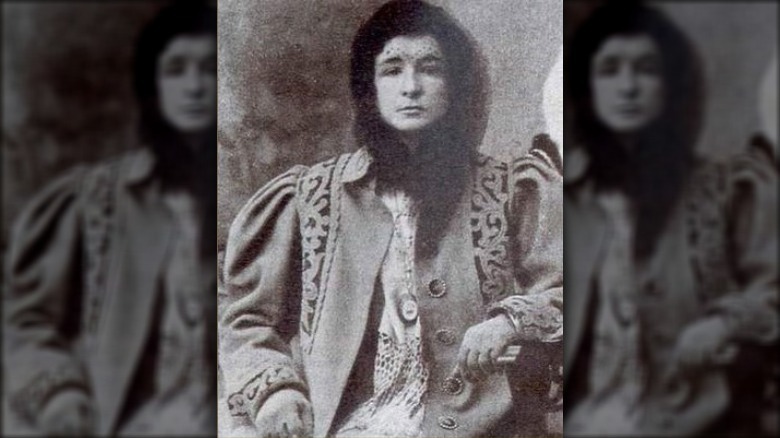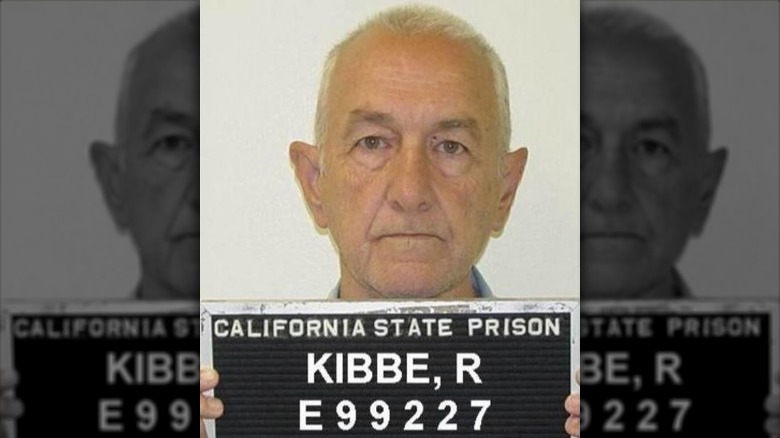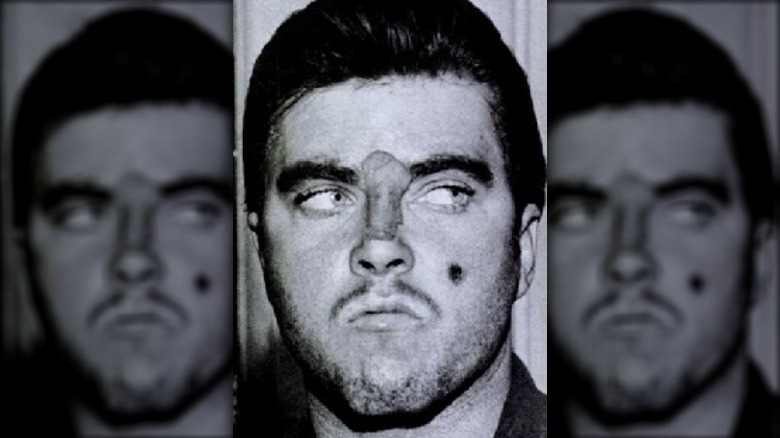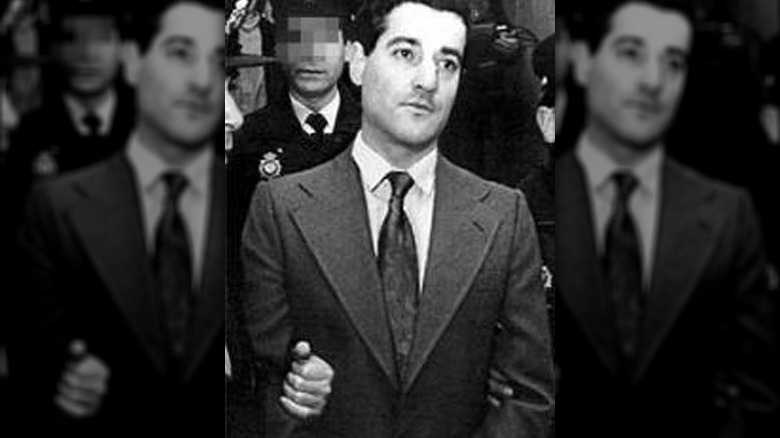Serial Killers That Were Killed In Prison
The idea of justice is an interesting thing, and according to research done with a group of three- and five-year-old children, the desire to see it done is something that humans were born with. A study published in 2015 (via ABC) came to the conclusion that even as children, humans were incredibly likely to reach out and help those who had been hurt by another, or had something stolen from them. They were also pretty highly motivated when it came to punishing those who had done something wrong, but overall, researchers came to the conclusion that problem-solving in early education might be more effective if more focus was put on helping the victim than punishing the perpetrator.
That's great for schoolyard arguments, but what happens when the crime is on a scale so large that most people can't even fathom it?
That's where we get into the idea of justice vs. revenge. Psychology Today says that while there's a bit of overlap between the two, one of the big differences is that justice is a rational punishment, and revenge is an emotional one. And when crimes are on the scale of those of a serial killer, it's easy to see even how other prisoners might want to get a piece of that. It absolutely happens: Where there's a will there's a way, and even though protective custody is a thing, these serial killers met their end at the hands of another prisoner, before justice could be satisfied.
Donald Harvey
According to The New York Times, a lot of hospital orderly Donald Harvey's coworkers did, in fact, notice that a lot of people seemed to die while under his care, but because many were elderly or incredibly ill to start, those who knew him just joked about how he must have some bad vibes. By the time Harvey was convicted in 1987, it wasn't so funny: He confessed to 37 murders, although he estimated he had killed around 70.
Some of his victims were suffocated and some were neglected, while others were killed with a lethal dose of various poisons. It was the poisoning that finally got him caught, when the autopsy of a patient who died after being in a motorcycle accident was found to have suspicious levels of cyanide in his system. Harvey later explained: "I felt what I was doing was right. I was putting people out of their misery. I hope if I'm ever sick and full of tubes or on a respirator, someone will come and end it."
Someone did, in fact, put an early end to Harvey's life. In 2019, ABC reported that fellow inmate James Elliott had been indicted for Harvey's 2017 murder. The two inmates were being held together in protective custody when Elliott attacked Harvey in his cell, administering a severe beating that led to Harvey's death. Elliott later explained that he'd been taking justice into his own hands, as he had grown up in the same area as Harvey and likely was familiar with distant relatives of some of Harvey's victims.
Leslie Bailey
Leslie Bailey was a member of a gang that the NNJournal says has been described as "The Dirty Dozen," and under the guidance of serial killers and pedophile Sidney Cooke, he and his cronies were responsible for recruiting or kidnapping at-risk and underage boys into a prostitution ring that was active in the 1970s and 1980s.
Bailey, says the Independent, was convicted in 1989 of the killing of 14-year-old Jason Swift, and in 1991 was given a life sentence for the murder of 6-year-old Barry Lewis. It wasn't until 1992 that he plead guilty to the 1984 murder of seven-year-old Mark Tildesley, and was given the final of his three life sentences. Law enforcement add that it's unclear just how many boys were killed by the gang, and estimates range from "several," to a reported 15 (according to a jailhouse confession by Cooke), to 20 (via The Guardian).
In 1993, law enforcement confirmed that Bailey had been found in his cell in Whitemoor Prison, and although it was first suspected that he may have committed suicide, the medical examiner later confirmed that he had been murdered. After investigation, two other inmates — John Brookes and Michael Cain — were tried and convicted of the killing, which was reportedly done as revenge for Bailey's child victims.
Albert DeSalvo
In 1967, Albert DeSalvo's defense attorney got around the whole "mentally unable to stand trial" thing, and got him into the courtroom after his arrest for a slew of offenses that included things like burglary and sexual assaults. According to The New York Times, it was during this trial that one of the psychiatrists who had examined him testified, "DeSalvo told me he was the strangler... He told me he strangled 13 women... and he went into the details of some of them, telling me some of the most intimate acts he committed."
The "strangler" was the Boston Strangler, a serial killer who stalked the city for two years, beginning in 1962. His reign of terror came to an end when, says History, one of DeSalvo's victims managed to make it to the police and give a description that led to his arrest. DeSalvo was given a life sentence for the crimes that he was put on trial for, but was stabbed and killed on November 25, 1973, while at the Walpole State Prison. It wasn't the end of the story.
A full 50 years later, ABC News reported advances in DNA technology had allowed Boston law enforcement to connect DeSalvo with the only DNA sample the Boston Strangler left behind. It was taken from his final victim — 19-year-old Mary Sullivan — and when it was compared to DNA taken from DeSalvo's nephew, the positive match allowed them to say for certain that yes, DeSalvo's confession had been legit.
Daniel Camargo Barbosa
The Spanish-language news outlet interviewed Daniel Camargo Barbosa in 1988, when the courts were getting ready to hand down their sentence. The then 58-year-old had confessed to an unthinkable series of crimes: the rape and murder of 71 women. That, El Pais says, was only over a 2-year period in Ecuador, and it represented only a fraction of the time he had been killing and a small portion of his victims. In his native Colombia, he was associated with a similar series of crimes, with around 80 possible victims.
His first Ecuadorian victim disappeared on December 18, 1984, when she was just nine years old. His horrifying preferences would continue, and when Camargo was arrested in February of 1986, he was carrying the bloody clothes of the eight-year-old girl who would be his last victim. Perhaps even more shockingly, those waiting to hear what his sentence would be were expecting him to get the longest prison term Ecuador would allow — just 16 years.
While he was given the 16-year sentence, he served only six of it. In spite of being put under constant surveillance, he was killed by another inmate at the Guayaquil jail on November 13, 1994.
Donald Leroy Evans
By the time Donald Leroy Evans was brought to justice, The New York Times says that his killing spree had spread across 20 states and 10 years to claim more than 60 lives. That, they add, was in spite of the fact that he had been arrested on charges unrelated to murder, and after undergoing psychiatric evaluation, was found to be a substantial risk to the public.
When he was finally arrested in connection with the murder of a 10-year-old girl, authorities say he got really, really upset. Why? He claimed it was the first time he'd killed a child, and started sharing the details of all the other murders to prove that was the case. At the time of his 1991 arrest, it was starting to look like if his confessions were true, he was going to be one of the worst serial killers in U.S. history. Ultimately, bodies ended up not being where he said they were — leaving as many questions as answers — but the Texas drifter was still put on trial and given the death penalty (in 1993).
He was on death row at the Mississippi State Penitentiary when the Los Angeles Times said he met his maker a little early. While being escorted back to his cell from the showers, he was stabbed and killed by another inmate. It was 1999.
Leopold Dion
In 1963, Macleans did a deep dive into the life of Leopold Dion. They found that surprisingly, there was something more tragic than the story of a serial killer taking the lives of children — that was the story of a serial killer who had already been tried and convicted of crimes including rape and "gross indecency" with a minor, but who had been paroled multiple times before going on to kill.
Dion's first conviction was in 1940 (although he had been acquitted of an attempted murder charge three years prior), and he served 16 years before being released on parole. He hadn't finished the terms of that parole when he found himself back behind bars but was released again. That was when he twice abducted two boys at a time, taking them to remote locations and strangling them.
Dion had made plans to kill three others but found himself behind bars again — this time, charged with four murders that would potentially result in a death sentence. He was still being held in the Archambault federal prison in late 1972, though — and that's when The Windsor Star reported that he had been killed by another inmate named Normand Champagne. Champagne — who was convinced that he was the reincarnated Lawrence of Arabia — was acquitted after entering an insanity defense.
Enriqueta Marti
Some stories dance along the line between historical fact and fiction, and it's entirely possible that's the case with Enriqueta Marti. Let's start with the story that ultimately got her killed. The popularly told tale (via Vice) says that Marti was one of the countless people who moved to Barcelona at the turn of the 20th century. Hoping for a better life, she found little more than sickness, poverty, and misery instead. Instead of just making ends meet with whatever odd jobs she could find, it's said that she started killing — mostly children — in order to drain their blood for the tonics and medicines she sold.
Law enforcement finally caught up to her in 1912, and not long after she was arrested, she died in prison. The official reports say that she succumbed to uterine cancer, but other sources (via Psychology Today) say she died not from that cruelest disease but at the hands of her cellmates, who were likely paid off by wealthy men and women who didn't want their names mentioned at a trial.
Or... was she?
In preparation for a film about her life and death, director Lluis Danes found substantial research that suggested she wasn't actually a serial killer, but a woman trying to make her way in the world selling potions and cure-alls not involving blood sacrifices at all. Instead, Danes argues (via Inside Media) that she was a scapegoat caught in a power struggle between the police and the media. Did it get her killed?
Lee Roy Martin
In 1968, Gaffney, South Carolina, was struggling with the terror of knowing they had a serial killer in their midst — four women were killed over 10 days by the so-called Gaffney Strangler. Things kicked off, says the Spartanburg Herald-Journal, when the editor of a local paper received an anonymous call from the killer himself on February 8, directing law enforcement to the remains of two missing girls. The community was on high alert, and after two vigilant locals recalled seeing Lee Roy Martin near the location where another body was discovered, he was arrested eight days later.
Martin was found guilty and given four life terms, but he only spent a few years behind bars. He was killed in 1972, and according to The Gaffney Ledger, he died almost instantly when he was stabbed multiple times by fellow inmate Kenneth Marshall Rumsey. Rumsey was, in turn, charged and convicted of that murder, but served only five more years in prison before committing suicide.
Roger Kibbe
The victims of the so-called I-5 Strangler were connected by a few things: They were killed in Northern California between 1977 and 1987, they showed signs of sexual assault, they were strangled, and their clothes had been sliced into ribbons. According to the Los Angeles Times, Roger Kibbe was on an early shortlist of suspects, but by the time he was arrested after trying to abduct another woman, seven were dead.
His original 1987 trial was only able to definitively link him to a single murder, and it wasn't until 2000 that DNA evidence had advanced to the point where law enforcement could tie him to more. Kibbe dodged the death penalty by promising to reveal the location of his final victim, who wasn't discovered and laid to rest until eleven years later.
Kibbe sat in jail for another decade before The Mercury News reported — in 2021 — that he had been killed by his cellmate, Jason Budrow. Budrow's confession was actually written to that very same newspaper, and he explained in a 5-page letter that he had planned on killing the then 81-year-old Kibbe from the very first day they had been put in the same cell together, and he believed he had done it for what he believed to be noble reasons. Calling himself a devotee of the "dark arts," he wrote that he believed that by killing Kibbe, he was freeing the souls of his victims from being tethered to the man who had killed them.
Charles Schmid
As far as serial killers go, History says that Charles Schmid was the whole package. A pathological liar with a Napoleon complex, Schmid started killing teenage girls simply because he wanted to — and thanks to help from two friends, he was right about being able to get away with his first murder, that of 15-year-old Alleen Rowe. Then, he just kept right on killing. The next to die were a pair of sisters, and bizarrely, part of Schmid's deal was that he liked to brag — so, he recruited help to bury them. The body count soon rose again, and it was finally the friend who had helped him bury the sisters in the Arizona desert who turned him in.
Schmid became known as the Pied Piper of Tucson, for his popularity among the area's teens, says MEL. His 10-day-long death started on March 20, 1975, when he was stabbed repeatedly by two other inmates who reportedly thought he was doing the sort of in-house snitching that was bound to get someone killed.
Now missing an eye and suffering from punctured intestines and lungs, University of Arizona English professor Richard Shelton — who Schmid had reached out to in hopes of getting a poetry critique — waited at his side as he died, later recalling, "It was pretty grizzly because they kept coming and asking if they could remove certain things, like an eye or a kidney. And they let him go, piece by piece."
Jose Antonio Rodríguez Vega
Jose Antonio Rodriguez Vega was finally brought to justice in 1991, when he was found guilty of the rape and murder of 16 elderly women in the Spanish city of Santander.
According to the Associated Press (via Deseret News), Vega's reign of terror spanned 10 months, when he would often go to the homes of his targets, pretend to be a salesman or a repairman, and simply stroll in the front door. Details on his crimes are scarce, but it seems as though he only served a handful of the 440-year jail sentence he was handed on his conviction.
In 2002, Vega was transferred to a prison in Salamanca, where two inmates attacked and killed him. According to witnesses, they told nearby prison guards that it was none of their business, and that they were simply handing out some prison-style justice to a criminal convicted of one of the offenses most likely to get someone handed an unofficial death sentence: rape.
Jeffrey Dahmer
When it comes time to list the world's most famous serial killers, Jeffrey Dahmer is definitely up there at the top of the list. He's also on the list of serial killers who were murdered in prison, well before they served their full sentence.
Dahmer's fame comes in part because of the sheer shock value of the things found in his apartment: When police intervened as would-be victim Tracy Edwards fled Dahmer's apartment, it kicked off an investigation that would turn up things like a 57-gallon drum filled with body parts and a fridge/freezer with a few human heads (via History). By the time the dust settled amid his 1991 capture, Dahmer admitted to killing 17 people, starting in 1978. He was given a sentence of 15 life terms, but he would only last a few years in prison.
Dahmer was killed by fellow inmate Christopher Scarver, who later said (via CNN) just why he'd done it. Dahmer, it seemed, had enjoyed his reputation as a cannibal, and was a huge fan of fashioning his prison food into body parts — then joking about how he liked to bite. Scarver had confronted Dahmer with a newspaper clipping about his crimes, and when he asked him if he was really guilty and he confirmed that he was, Scarver killed him with two blows from a weight room bar. His last words were reportedly: "I don't care if I live or die. Go ahead and kill me."



